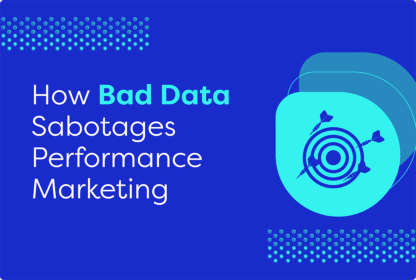As we get into the last few months of 2023 (hard to believe), it’s a good time to take stock of several trends that we believe will keep marketers on their toes well into the new year. These themes we’ve been building toward as an industry for several years are now becoming necessities for marketing success.
- Going omnichannel means going offline
Yes, the world has gone digital. We’re cashless, juggle multiple devices at once, watch TV via the Internet, and are far more likely to fire off a text or an email as preferred communication methods.
But that doesn’t mean that offline channels don’t still have a place in an omnichannel marketing strategy. In the last few years, there’s been a rise in “hybrid” media (or media channels combining both online and offline tactics). Connected TV (CTV), streaming, Digital-Out-of-Home (DOOH), and Programmatic Direct Mail (PDM) are a rising class of hybrid channels marketers are turning to to succeed. For example, CTV ad spending has grown from $6 billion in 2019 to a projected $25 billion this year.
Where you engage with consumers matters. According to the National Retail Federation, 80% of all shopping still happens in stores. However, consumers are now also using technology in-store more often, with 56% using smartphones to shop or browse products in a physical retail location.
And there are benefits to this new “phygital” approach to shopping. New store openings boost website traffic for retailers by 37% and increase the share of traffic in that market by 27%. This shows that online and offline complement one another. Focusing on digital only, on the other hand, can cost businesses 20% of their marketing spend’s ROI. These shifts in consumer shopping habits require expanding the media brands use to engage their target audiences.
Stitching together online and offline via hybrid channels helps brands get a more complete picture of their customers and close the loop on marketing measurement.
In other words, it makes them genuinely omnichannel.
- Going back to the future to reach consumers with more ease
History always repeats itself. One need only visit a clothing store to see the current resurgence of mid-1990s to early-2000s fashion or note the recent popularity of 1980s-era shows like Stranger Things to prove this point (if only we all had an archival closet!). The same thing is happening in marketing.
Before we complicated the Internet with a tangle of third parties and technologies vying for consumer attention, bogging down page load times, and sharing consumer data down a chain that was impossible to follow, we had homepage traffic, blogging, newsletters, and direct mail. We are rewinding the clock to these marketing tactics and channels that worked in decades past, only with a digital twist that is helping to restore privacy to consumers and control to advertisers.
As Accenture points out, “Amid the pressure of life forces and the chaos of everyday life, what customers ultimately need is simplicity. They are drawn to anything that cuts through the noise and makes their decision-making—and their lives—easier.” What better way to do this than with a highly-targeted, beautifully designed, measurable piece of direct mail reaching the consumer at the moment they are making key buying decisions?
With the looming deprecation of third-party cookies, all marketers will need a new way to identify and target key audiences. Instead of trying to come up with new solutions to old problems, many marketers are looking to the household address as a primary identifier—something retail marketers relied on decades ago.
With more consumers making big purchase decisions in the home, being able to target at the household level increases the chances of engaging the right consumer with the right message at the right time. Hybrid channels like PDM, not unlike CTV and DOOH, can help brands attain better reach and engagement using home and location.
- 2024 is the year the industry must step up or be left behind
Aside from Google deprecating third-party cookies in Chrome, new state privacy laws and potential federal privacy regulations will be enacted in 2024. It’s also an election year, meaning your brand must compete with the clutter of political ads and navigate the technical and ethical challenges that the success of digital advertising has brought to the political landscape.
The advertising industry must take a big step forward and put future-proofed solutions in place that combine traditional offline channels with emerging digital ones. Many solutions providers aren’t set up to serve that need in the market because they’re digitally native and, thus, don’t know how to stitch together offline and online. Vendors must figure out how to pivot their products to serve all the brands navigating a much-evolved advertising landscape.
So, who will succeed in this industry’s next chapter?
The companies that “win” will be the ones that adopt some of the “first principles” of the new era outlined by LUMA in their 2023 State of Digital presentation from their annual Digital Media Summit. Their building blocks for a scaled digital ad ecosystem include:
- Consumer Adoption: Marketers want solutions to engage consumers at scale. Any media needs to reach a critical mass of the population.
- Data and Identity: Third-party data isn’t enough anymore. Marketers must connect their first-party data to a universe of targetable audiences to reach consumers with relevance and respect.
- Automation and Performance: Marketers need to see their marketing perform and do it at scale. Solutions that use machine learning coupled with rock-solid measurement are table stakes to power marketing success.
With access to 100% of residential households (Consumer Adoption: Check!), a scaled proprietary data graph that connects consumer intent and omnichannel purchases to all of those households (Data and Identity: Check!), and a set of products that consistently beat marketer KPIs and demonstrate clear incremental performance (Automation & Performance: Check!), we have never been more excited to charge into next year and continue to deliver great offerings to our brand partners.
We look forward to working with you in the new year. Drop us a line with your thoughts and let us know if this resonates with you, and let’s continue to innovate together.
In partnership,
Jacob



